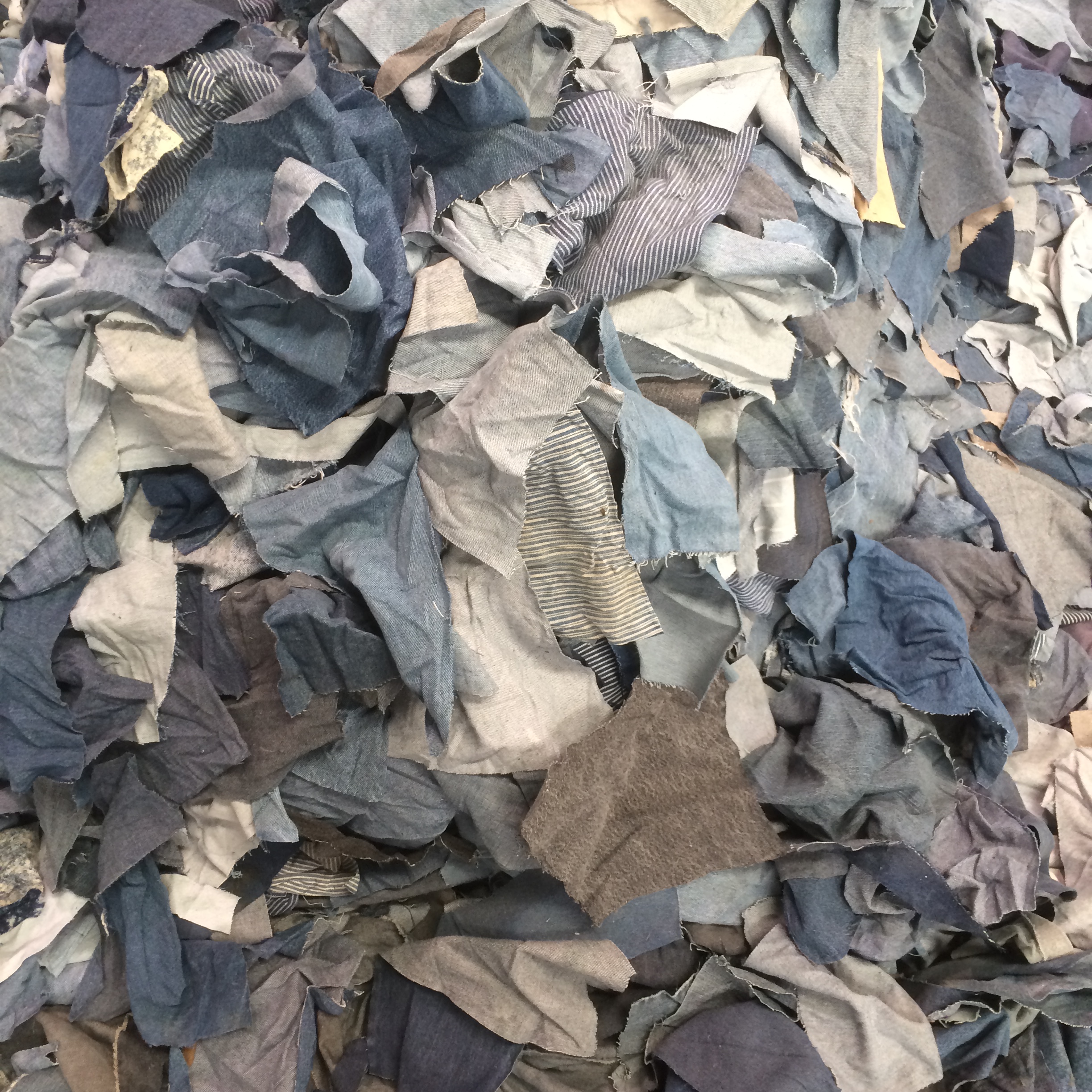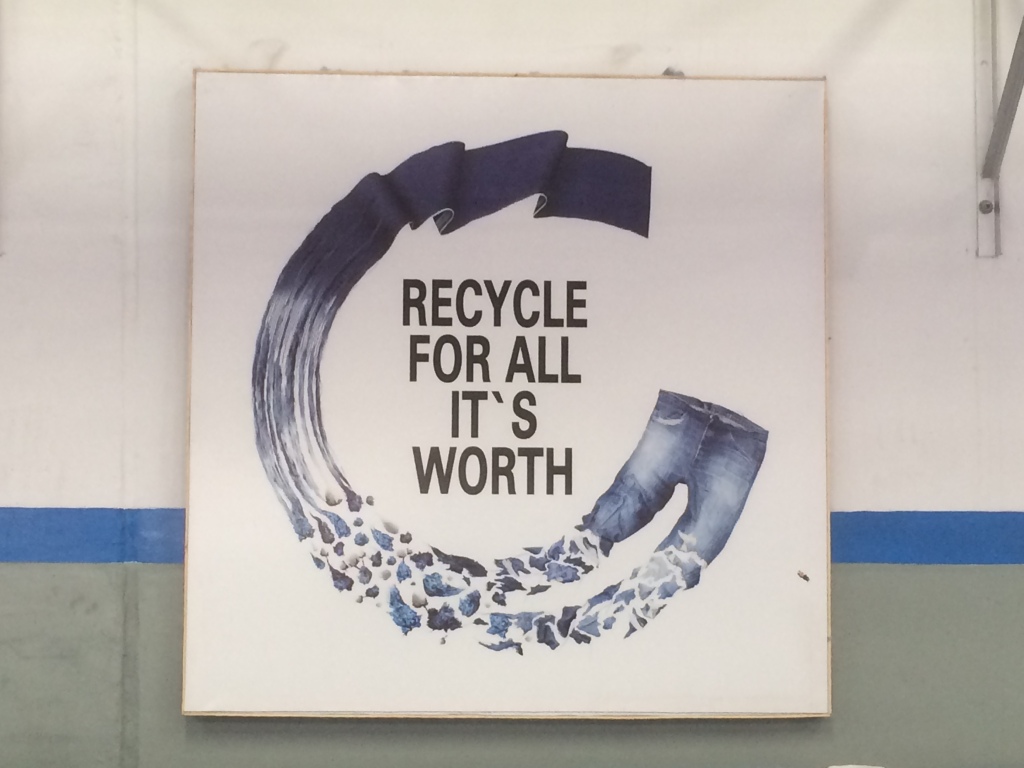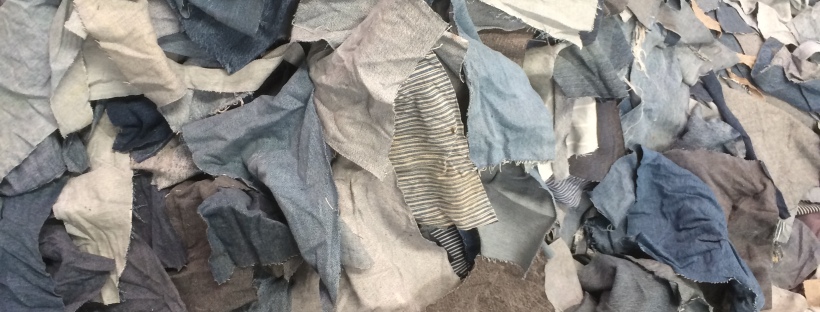How many pairs of jeans do you have in your wardrobe? How often do you wear them and are you washing them after only a days use? How much did they cost and how long do you expect to wear them for? What will you do with them when they are no longer fit for wearing? There are many questions we can challenge ourselves with when it comes to responsible textile consumption and disposal but let’s first look at the gruelling processes involved to manufacture a pair of jeans.
Denim jeans are made mostly of the seemingly pure and all natural plant based fibre that is cotton. Cotton is a crop plant which is grown worldwide with 75% of it being cultivated in China, India, USA, Pakistan and Brazil. This thirsty plant depends on fertile land, intensive irrigation, pesticide spraying and a sunny climate in order for crops to thrive. Cotton is often referred to as “White Gold” due to the high demand for its valuable fibre. Cotton agriculture is often subjected to corruption and capitalism, which not only devastates the environment but suppresses farmers to work with hazardous chemicals and often for unfair pay.
In her manifesto, Li Edelkoort challenged “How can a product that needs to be sown, grown, harvested, combed, spun, knitted, cut and stitched, finished, printed, labelled, packaged and transported cost a couple of Euros?”
Take a moment to consider how much you pay for mid-market jeans. It takes an average of 1.5 meters to make a pair of jeans using finished denim at an average cost of 3$ per meter. It takes approximately 1.5 lbs of raw cotton to make a pair of jeans and at present in the 2016 market cotton costs approximately $0.68 per pound. That’s $1 worth of treated cotton per jean. Now with this small figure try and imagine how much a cotton farmer earns for the unprocessed raw cotton plant.
An average pair of jeans uses up to 3,781 litres of water in its full lifecycle with 70% of this precious water being used in cotton farming alone. Most of the World’s cotton is grown in arid regions where it depends on the limited supply of groundwater for irrigation. Water is the most precious natural resource on our Planet and we depend on it for survival, yet 663 million people (1 in 10) lack access to safe water*.
After the cotton balls are harvested they are treated for contamination (dirt, twigs, non organic material) and processed into raw cotton fibres, which are then spun into yarn. These raw cotton yarns then go through an indigo dying process called rope dying where they are dipped through vats of water based chemicals and dyes. A responsible denim mill would have an effluent water treatment system separating the dyes and chemicals from the water, which would then be recycled back into the factory for continued use, avoiding local river contamination and the over consumption of the regions limited water supply.

Next the yarns are spun into threads and used to weave denim fabric. The rolls of fabric are then rinsed again and treated with a finishing process. The raw fabric is then ready to be cut and sewn into garments. Jeans are sewn with raw denim which is very dark, stiff and flat in texture. In order to achieve the various indigo shades and the typical vintage aesthetic the garments are washed and treated at a laundry plant. This process involves garment washing in huge laundry machines and often with more chemicals. Finally, after the consumer makes the purchase, the consumption of water will continue as the jeans are washed in domestic washing machines.
It becomes a bit overwhelming to think of the natural resources used to make denim apparel, not to mention the intensive labour. You might begin to appreciate the true cost of clothing and ask how many pairs of jeans do I really need?
If taken care of, a good quality pair of jeans should last around three to five years with regular use and reduced machine washing. Denim develops character as you ‘break them in’ and if you avoid over washing your jeans they will become more authentic looking with age. As your thread bare jeans near the end of their lifetime you may decide to repair them (check out some cool stitch and patch repair ideas in the DIY section), donate them or perhaps you will dump them.
In the USA alone, 28 million pounds of textile waste is discarded each year. Approx 15% of this unwanted clothing is collected by charities but a staggering 24 billion pounds goes directly into landfill. The majority of the World’s textiles are made of man made plastic fibres, which then break down into hazardous waste when dumped in landfill. The environment cannot keep up with fashions constant rotation of clothing and this is obviously an unacceptable amount of wastage.
Recycling denim and textiles is the only way to close the loop on clothing’s linear lifecycle. Some denim brands are developing innovative ways of recycling old denim into new denim garments. The process is really exciting and you can check out how this is done in the factory on this video link. The post consumer waste (PCW) denim garments are deconstructed into scraps and shredded into raw cotton again, just like how it began. This cotton fibre is then blended with virgin cotton to ensure good tensile strength and woven into new denim fabric. By cutting out the agricultural process, jeans crafted with at least 15% recycled cotton saves as much water as the entire manufacturing process consumes. Many denim brands are taking more responsibility and you can research more collections that have practiced a sustainable processes such as reduced water process, recycled cotton, recycled polyester and BCI cotton (Better Cotton Initiative-which gives support to cotton farmers). Another point to consider is that whilst organic cotton is considerably better, it still needs the same volume of water to grow and process.


PCW Cotton Denim recycling at Artistic Fabric Garment Industries Pakistan 
PCW Cotton Denim recycling at Arvind Mills India 
PCW Cotton Denim recycling at Artistic Fabric Garment Industries Pakistan
Some fashion brands are introducing a recycling system where customers can return clothing once it’s used and they are often offering customers a store discount in return. Have you ever ruthlessly raided your wardrobe out and dumped a load of redundant fashion items in a charity shop or return box? Hands up – “I have”. It feels kind of refreshing doesn’t it? I makes me feel like I can go out and buy some more clothes. I think you know what I am getting at here, right? Personally I find this a ‘First World’ solution to a ‘Developing World’ problem.
Many individuals are practicing recycling paper, plastics and domestic waste but not enough people are responsibly recycling textiles. Recycled textiles can have many second lifetime uses and can be developed into products such as new fabrics, wiping cloths, upholstery and insulation. Many people share the same thought: “how do you recycle textiles when they are threadbare and beyond reuse?”
With recycling companies such as I-Collect you can host a textile recycling bin at your business or retail store where textiles will be collected and recycled into material for new products. Many communities and cities also have textile recycling banks which accept torn textiles and rags. I learned recently that most of the charity shops are selling on rags to recycling companies. Oxfam for example has its owning recycling plant where the shops can send unsaleable clothes. If your donation consists entirely of unusable textiles, it will save volunteers time in sorting donations if you label the bag “damaged/unwearable textile waste”.

Recycled denim
I myself have more pairs of jeans than I have fingers to count them on, but I have drastically curbed the consumption habit. Of the jeans which were questionable fashion choices or simply (and sadly) no longer fit, I donate to charity shops or share to slimmer friends (sickening to see your Bestie in your beloved indigo which you didn’t have a chance of ever fitting into again). I have at least three pairs of thread bare jeans that I have worn for over half a decade but I just cannot give up on them. They have been busted, mended, re-dyed, reinvented and continue to be worn with love and sentiment.
If you are investing in a really good pair of jeans talk to the sales assistants about long lasting fabrics that are hard-wearing and keep their shape. If you buy raw denim jeans, consider you should only wash them once or twice a year, as you would an outerwear coat. This practice will maintain the colour fastness and you will wear out the indigo surface naturally. If you find your friends distancing themselves from you it may be time to consider ‘freshening up’ your five-pockets. You can spot clean stains, air them out and even store them in the freezer for a few days to kill off any bacteria.
Many denim brands are offering an up-cycling or repair service where you can have hardware and zips replaced or seams reinforced. Considering what I know now on the denim making process I could never bring myself to buy cheap fast fashion jeans because I am too aware of the likely negative impacts their production may have had on the environment, and they would be likely to rip or lose their shape in no time. Jeans are a wardrobe staple and if invested in should feel and look great for years.
Rebecca
*(References World Health Organisation and UNICEF Joint Monitoring Programme (JMP). (2015) Progress on Drinking Water and Sanitation, 2015 Update and MDG Assessment.)
Useful links
Textile recycling UK
http://www.recycle-more.co.uk/bank-locator
http://www.oxfam.org.uk/shop/local-shops
http://www.salvationarmy.org.uk/recycling
Textile recycling Ireland
http://www.alltexrecyclers.com/services.html
Textile recycling USA


2 thoughts on “Closing the Loop on Denim’s Lifecycle”